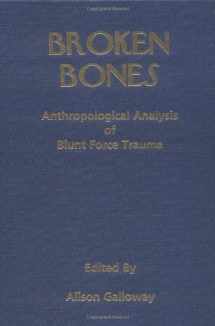
Broken Bones: Anthropological Analysis of Blunt Force Trauma
Book details
Summary
Description
This volume is designed to serve as an overview of the principles behind interpretation of skeletal blunt force trauma. It is intended for those forensic anthropologists confronting human skeletal material, whether from archaeological or forensic contexts which requires analysis of traumatic defects. While relying on clinical reports in large part, it is designed for those dealing with dry bone. Survivability of injuries and morbidity is rarely mentioned and treatment ignored. Rather, the emphasis is first on documentation and second on interpretation. At a second level, this volume aims to emphasize the importance of the individual in interpretation of skeletal trauma. The inclusion of case studies returns to this focus. Small peculiarities of the circumstances of injury, including the position of the body, the configuration of the impacting object and the speed of impact; the anatomical structure of the individual at that point in his or her life; and the perspective of the anthropologist must all mesh to produce a viable interpretation of the trauma production. It is this emphasis which the author conveys throughout the volume that when all else is done, the individual must still be dealt with.


We would LOVE it if you could help us and other readers by reviewing the book
Book review



